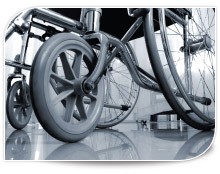There are simple and effective ways to assist you in managing in your own home and this includes using common types of assistive equipment, such as:
- Bathroom grab bars
- Shower seats
- Bathtub mats
- Beds with special features that increase your ability to get in and out of bed
- Assistive telephones (for hearing-impaired and sight-impaired people)
- Stovetop burners (for sight-impaired people)
- Doorbell signaler (for the hearing-impaired)
- Walkers and canes
- Wheelchairs
- Entry ramps
- Home modifications (roll-in shower; stair lift; pull-down kitchen shelf; movable cabinets under the sink)
- Smoke detectors throughout the home
- Alarm system in the home
- Handrails for stairs
- Night-lights where needed
 This equipment can ensure that you maintain your independence and are able to continue living in your own home. It is also useful for carers to consider using assistive equipment to make caring for you easier and also ensure that your home environment is safer.
This equipment can ensure that you maintain your independence and are able to continue living in your own home. It is also useful for carers to consider using assistive equipment to make caring for you easier and also ensure that your home environment is safer.
Talk to your health care provider, treating specialist, general practitioner or occupational therapist if you feel that you could benefit from having your care needs assessed and your home reviewed for ways to utilise assistive equipment. They will be able to assist you in working out what might help you and how you can go about obtaining equipment. AMAA is often given equipment by members that can be purchased – contact us to find out more.
The most important thing is for you to be comfortable in your home and able to manage your ARD symptoms as much as possible.